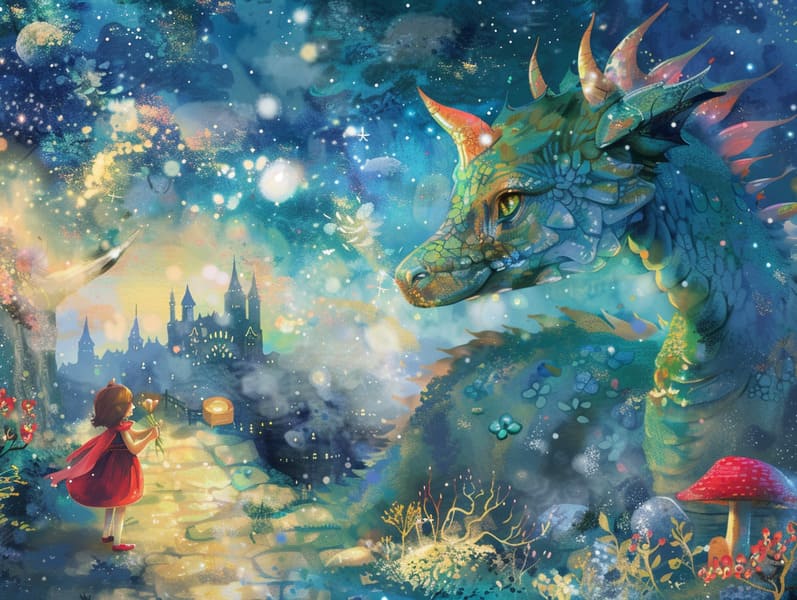The Inception of Fairy Tales with Their Immortal Wonder.
The Inception of Fairy Tales with Their Immortal Wonder.
Blog Article

Short fairy tales have legendary status. These stories have been whispered from one generation to the next long before they were ever put on paper. They arose from a variety of backgrounds, including Middle Eastern traditions. They were initially narrated among mature audiences, often carrying themes and messages pertaining to the societal norms and beliefs of the time.
Jacob and Wilhelm Grimm, Jacob and Wilhelm Grimm, were among the first to collect many of these beloved stories. Their volume, "Grimm's Children's Stories," included classics like "The True Bride," "The Story of Hansel and Gretel," and "Little Snow White," which have since become staples in the world of timeless fairy tales. Similarly, H. C. Andersen's fanciful narratives, such as "The Mermaid," and "The Duckling's Story," have gained the love worldwide, cementing their place in the pantheon of treasured fairy tales.
Despite their ancient origins, these stories remain as meaningful as ever, especially as bedtime stories for kids. These charming stories are now available in numerous formats, including beautifully illustrated books, charming animations, and digital fairy tales.
Their lasting presence can be traced to several charming aspects:
Moral Lessons: Classic fairy tales often convey important moral lessons. Narratives like "The Tale of the Boy Who Cried Wolf" teach the virtue of being truthful, while "The Hare and the Tortoise" highlight the values of tenacity and modesty. These narratives offer the young clear distinctions between ethical and unethical, helping to shape their moral compass in a mild yet profound way.
Empathy and Understanding: Traditional fairy tales frequently depict heroines facing tests and troubles, provoking young readers to feel with their struggles and celebrate their triumphs. For instance, "The Story of Beauty and the Beast" emphasizes the value of valuing inner qualities to understand the real person of a individual, encouraging sympathy and insight.
Cultural Understanding: Many timeless fairy tales are steeped in the cultural contexts from which they emerged. Discovering these tales can provide captivating looks into different traditions, cultivating a sense of world respect and appreciation.
Creativity and Fantasy: The whimsical elements in old fairy tales—enchanted forests—foster children’s innovative ideas. These fairy tales carry readers to magical realms, provoking creative thinking and a sense of marvel that remains a lifetime.
Classic fairy tales are not only bewitching but also enlightening. They provide spellbinding tools in fostering various thinking and feeling skills in little ones. When timeless fairy tales are spoken out loud, they enhance language development by presenting new lexicon and sophisticated sentence structures. This practice also cultivates auditory skills and mindfulness, as young readers keep up with the story, ready to see what happens next.
Furthermore, conversing about the themes and characters of classic fairy tales can develop problem-solving abilities and analytical skills. Young ones are guided to find patterns, expect results, and comprehend cause and effect. These read more talks also aid young ones reveal their thoughts and feelings, fostering their emotional intelligence.
In today’s information age, the abundance of free fairy tales online has made these tales more accessible than ever. Digital sites and apps share large libraries of timeless fairy tales that can be enjoyed or listened to anytime, anywhere. Fairy tales read aloud are particularly in demand, making available an interactive method for little ones to enjoy these fantastical tales. Narrated books and read-to-me stories take characters and settings to life, often complemented by whimsical background sounds and music that enrich the storytelling experience.
The timeless fascination of timeless fairy tales lies in their ability to shift to contemporary times while staying true to their central values. Contemporary takes of these stories often show more representative protagonists and modern settings, making them familiar to today’s audience. However, the main ideas of fortitude, sympathy, and impartiality remain unchanged, continuing to strike a chord with audiences of all ages.
Traditional fairy tales also offer a sense of ease and knowability. They bring a organized narrative with a evident beginning, middle, and end, often concluding with the resolution of conflicts and the triumph of good over evil. This consistency can be encouraging for little ones, delivering a sense of assuredness in an ever-changing world.
Ancient fairy tales continue to allure and edify new generations, maintaining their attraction and value in modern society. As nighttime stories for kids, they yield a perfect blend of delight and instruction, cultivating moral values, empathy, and creativity. The accessibility of internet fairy tales and the widespread nature of fairy tales told out loud certify that these ancient fairy tales remain available to new generations.
By holding onto and conveying these narratives, we continue to commemorate the rich tapestry of storytelling and cultural heritage. Whether you are exploring a colorful picture book, experiencing a web-based library, or listening to an read-aloud story, the delight of famous fairy tales is always within reach. These narratives highlight of the continued impact of storytelling and its ability to link us across generations and cultures.
Even if you are delving into a colorful picture book, perusing a electronic collection, or playing an sound book, the grace of ancient fairy tales is always within reach.
These stories emphasize of the unchanging effect of stories and its ability to unite us across generations and cultures, forming a connection that delights and instructs alike.